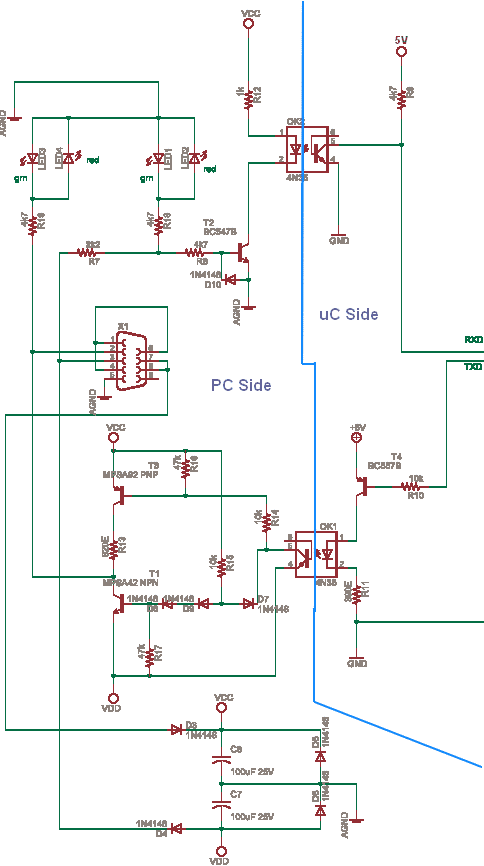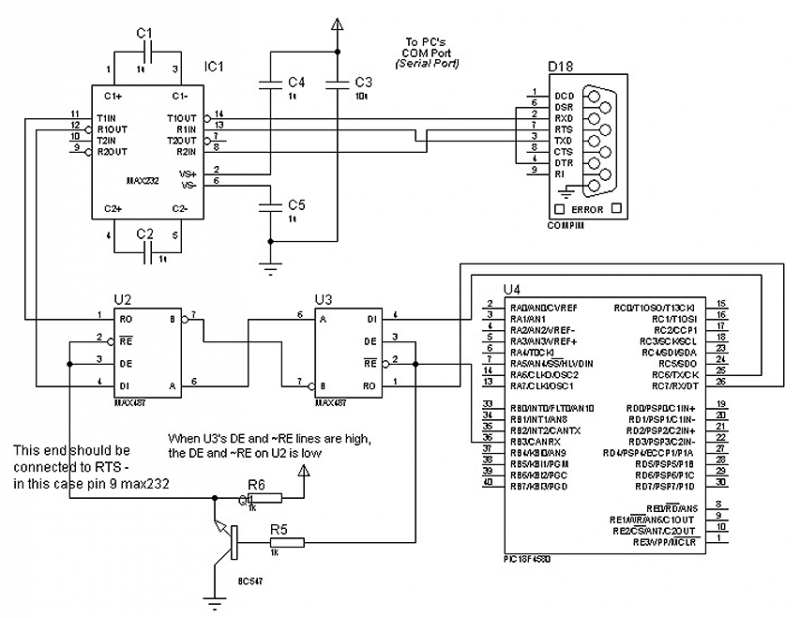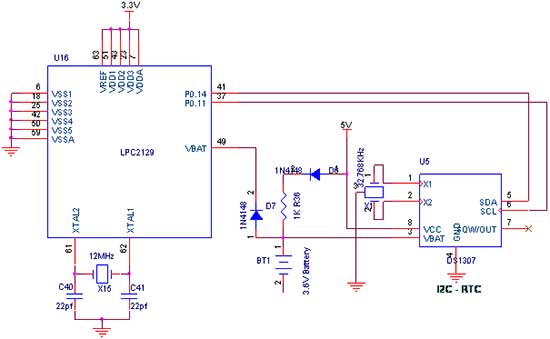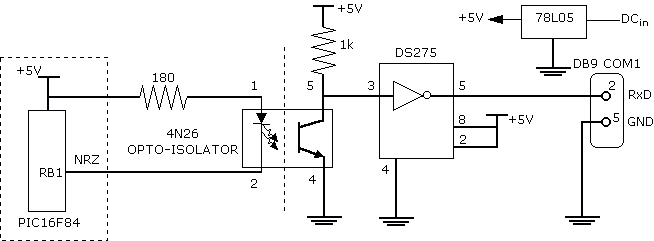
interfacing rs 232 with spartan 6 fpga
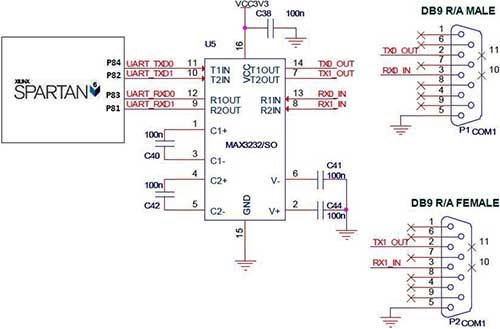
The UART (Universal Asynchronous Receiver/Transmitter) is a serial protocol featuring distinct transmit and receive lines, enabling full-duplex communication. The Spartan-6 board is equipped with two serial ports, as indicated in the accompanying figure. RS-232 serial communication is facilitated through a 9-pin SUB-D connector and the FPGA UART module. The UART is one of the most prevalent methods for data exchange between the FPGA and peripheral components. To enable this communication, a connection must be established between the RX and TX lines on the SUB-D connector and the corresponding pins on the target FPGA. Given that RS-232 communication voltage levels differ from FPGA logic levels, it is essential to implement an RS-232 transceiver circuit, such as the MAX3232, as illustrated in the figure.
The UART protocol operates by transmitting data in a serial manner, where each byte is sent sequentially, allowing for efficient communication between the FPGA and external devices. The Spartan-6 board's two serial ports can be utilized for various applications, including interfacing with computers, sensors, or other microcontrollers, thereby enhancing the system's versatility.
The 9-pin SUB-D connector serves as the interface for RS-232 communication, where specific pins are designated for transmitting (TX) and receiving (RX) data. The connection between these pins and the FPGA's UART module is critical for ensuring proper data flow. The RX pin on the FPGA must be connected to the TX pin of the RS-232 interface, and vice versa, to facilitate bidirectional communication.
Due to the inherent differences in voltage levels between RS-232 and FPGA logic levels, an RS-232 transceiver is necessary to convert the signals appropriately. The MAX3232 is a commonly used transceiver that converts the RS-232 voltage levels to TTL levels compatible with the FPGA, allowing for reliable communication. This device typically operates with a supply voltage of 3.0V to 5.5V and can support multiple channels, making it suitable for applications requiring multiple serial connections.
In summary, the integration of the UART protocol with the Spartan-6 board, along with the use of an RS-232 transceiver like the MAX3232, enables effective full-duplex communication between the FPGA and various peripheral components, thereby expanding the capabilities of the system. Proper implementation of the connections and understanding of the voltage level requirements are essential for successful operation.The UART (universal asynchronous receiver/transmitter) is a serial protocol with separate transmits and receives lines, and can be used for full duplex communication. The Spartan-6 board has 2 Serial Port, indicated as in Figure. RS-232 serial communication is performed through a 9-pin SUB-D connector and the FPGA UART module. The UART is one of t he most common ways of exchanging data between the FPGA and peripheral components. In order to enable this communication, it is necessary to establish a connection between RX and TX lines on SUB-D connector and the same pins on the target FPGA. Since RS-232 communication voltage levels are different than FPGA logic levels, it is necessary to use a RS-232 Transceiver circuit, such as MAX3232 as shown in Figure.
🔗 External reference
The UART protocol operates by transmitting data in a serial manner, where each byte is sent sequentially, allowing for efficient communication between the FPGA and external devices. The Spartan-6 board's two serial ports can be utilized for various applications, including interfacing with computers, sensors, or other microcontrollers, thereby enhancing the system's versatility.
The 9-pin SUB-D connector serves as the interface for RS-232 communication, where specific pins are designated for transmitting (TX) and receiving (RX) data. The connection between these pins and the FPGA's UART module is critical for ensuring proper data flow. The RX pin on the FPGA must be connected to the TX pin of the RS-232 interface, and vice versa, to facilitate bidirectional communication.
Due to the inherent differences in voltage levels between RS-232 and FPGA logic levels, an RS-232 transceiver is necessary to convert the signals appropriately. The MAX3232 is a commonly used transceiver that converts the RS-232 voltage levels to TTL levels compatible with the FPGA, allowing for reliable communication. This device typically operates with a supply voltage of 3.0V to 5.5V and can support multiple channels, making it suitable for applications requiring multiple serial connections.
In summary, the integration of the UART protocol with the Spartan-6 board, along with the use of an RS-232 transceiver like the MAX3232, enables effective full-duplex communication between the FPGA and various peripheral components, thereby expanding the capabilities of the system. Proper implementation of the connections and understanding of the voltage level requirements are essential for successful operation.The UART (universal asynchronous receiver/transmitter) is a serial protocol with separate transmits and receives lines, and can be used for full duplex communication. The Spartan-6 board has 2 Serial Port, indicated as in Figure. RS-232 serial communication is performed through a 9-pin SUB-D connector and the FPGA UART module. The UART is one of t he most common ways of exchanging data between the FPGA and peripheral components. In order to enable this communication, it is necessary to establish a connection between RX and TX lines on SUB-D connector and the same pins on the target FPGA. Since RS-232 communication voltage levels are different than FPGA logic levels, it is necessary to use a RS-232 Transceiver circuit, such as MAX3232 as shown in Figure.
🔗 External reference
